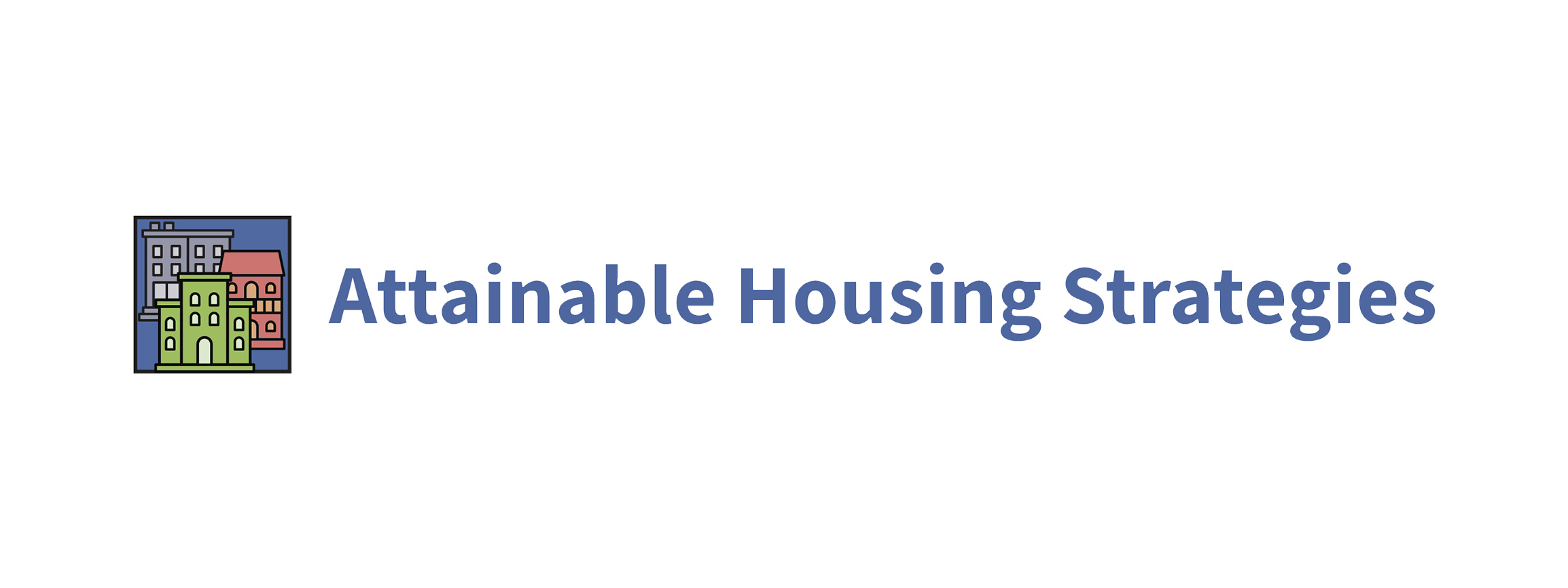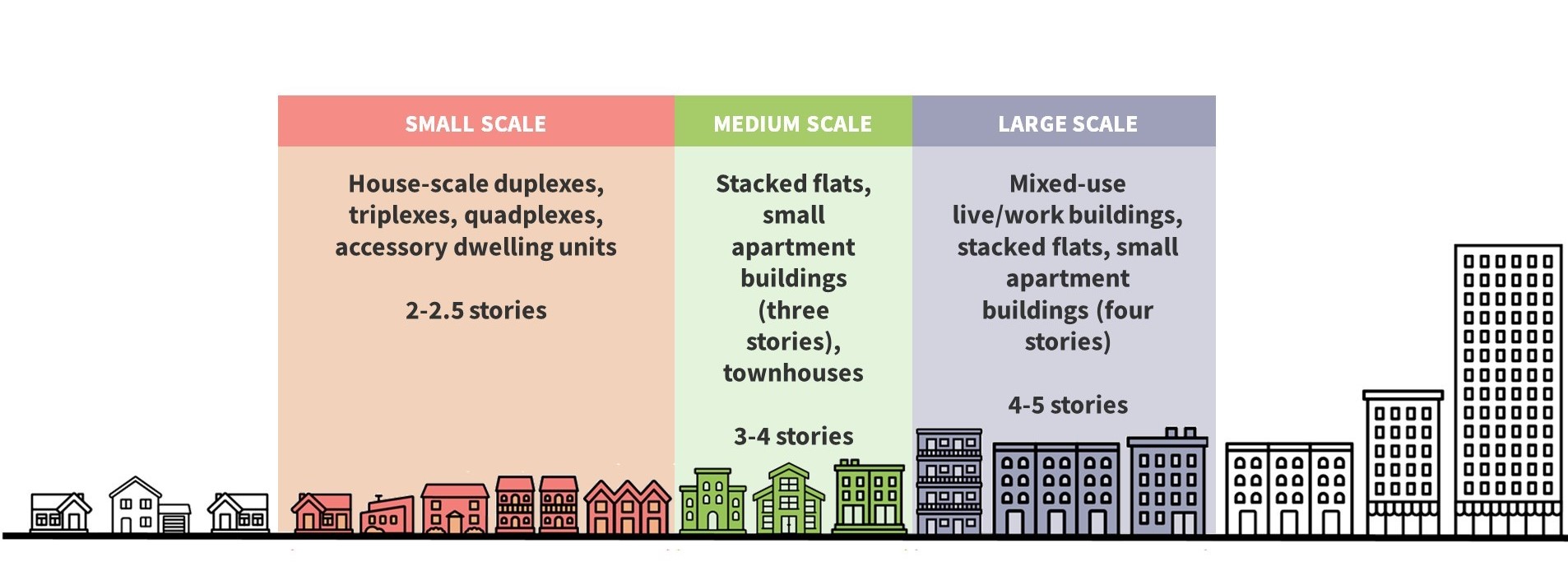
Virtual meeting will follow the Planning Board’s sixth Attainable Housing Strategies work session on Dec 2
WHEATON, MD – The Montgomery County Planning Department, part of The Maryland-National Capital Park and Planning Commission (M-NCPPC), announced it will hold a virtual meeting to present the Montgomery County Planning Board’s Attainable Housing Strategies recommendations to the community on December 13 at 7 p.m. During the meeting, which will be held on Microsoft Teams, Montgomery Planning staff will share the Planning Board’s recommendations to date, next steps for the initiative, as well as hold a question-and-answer session after the presentation. This will be Montgomery Planning’s fourth community meeting since the initiative began in March 2021 and will follow the Planning Board’s sixth Attainable Housing Strategies work session on December 2. RSVPs are required.
Register for Community Meeting #4: Attainable Housing Strategies Planning Board Recommendations
The Attainable Housing Strategies effort launched at the direction of the Montgomery County Council on March 4, 2021 to “consider zoning reforms that would allow greater opportunities for Missing Middle Housing in Montgomery County.” Since that time, Montgomery Planning staff have reviewed zoning and planning policies and conducted community outreach to come up with a comprehensive strategy for providing options for residents to find homes at the right sizes, locations and price points for their needs in Montgomery County. During the Attainable Housing Strategies work sessions, Planning staff have presented their recommendations to the Planning Board on developing tools that can encourage the creation of a more diverse range of housing typologies.
“Montgomery County has a housing crisis, particularly in terms of offering a diversity of housing types and housing choice,” said Planning Director Gwen Wright. “Through the Attainable Housing Strategies initiative, we have the opportunity to provide more housing choice – especially for residents just entering the housing market – and create more housing that better meets the needs of current and future residents.”
The sixth work session is scheduled during the Planning Board’s meeting on December 2, 2021. This will include reviewing the draft Attainable Housing Strategies report and potential corresponding amendments to the county’s zoning code. The community is invited to submit written comments to the Planning Board via email at mcp-chair@mncppc-mc.org. You can consult the Planning Board’s agenda, posted 10 days before the meeting for more information. Watch the meeting online via live stream or review previous meetings on demand.
Following Planning Board review and approval, the Attainable Housing Strategies recommendations will be transmitted to the Montgomery County Council. The Attainable Housing Strategies initiative’s timeline has been revised so that transmission of the Planning Board’s recommendations will follow final County Council action on Thrive Montgomery 2050.
Summary of the last five Planning Board Attainable Housing Strategies work sessions
Over the last five Attainable Housing Strategies work sessions, held on July 8 and 22, September 9, October 7, and November 4, the Planning Board made the following recommendations:
Definition and scale: The Planning Board supported the goals of the initiative following a refinement that added more direct language and included a focus on economic development. The Planning Board also supported a definition of attainable housing that includes a focus on the intent of attainable housing, to provide more diverse housing options. Attainable housing options included small, medium and large scale types of attainable housing, each with different locations and types of review: small would be by-right, medium would be through an optional method overlay zone, and large would be through master plan review.
Product Type: Per guidance from the Planning Board, staff will produce draft Zoning Text Amendments (ZTAs) to transmit to the County Council for its consideration. The ZTAs would detail the recommendations as edits to Chapter 59 of the county code. The County Council can consider the Board’s recommendations and move forward with all, some or none of the recommendations.
Applicable Residential Zones for Small Scale: The Planning Board recommended allowing small scale Attainable Housing as by-right uses in the following zones:
- duplexes anywhere in the R-40, R-60, R-90, and R-200 zones;
- triplexes anywhere in the R-40, R-60, and R-90 zones; and
- quadplexes in the R-40, R-60, and R-90 zones within the Priority Housing District.
Small scale Attainable Housing must be house-sized and would have the same height limitations and setback requirements as currently exist in the underlying zones. This small scale Attainable Housing would be subject to a review with a Pattern Book to assure that the projects would fit in with existing neighborhoods.
Priority Housing District: The Planning Board defined the Priority Housing District, in which quadplexes would be allowed and parking requirements would be reduced, using a straight-line buffer of 1-mile from Red line, Purple Line, and MARC rail stations,1 plus 500 ft from a BRT Corridor plus River Road (inside the beltway) and Connecticut Avenue.
Pattern Book: The Planning Board recommended creating a Planning Board approved pattern book, which will be mandatory for the creation of new small scale attainable housing whether through new construction or renovations to existing structures. The Pattern Book will be developed separately from the zoning recommendations through a process that will provide additional opportunities for community and stakeholder input. Work on the Pattern Book will proceed after getting direction from the County Council.
- The Planning Board agreed with staff that the pattern book should include mandatory guidelines that would apply to small scale attainable housing typologies, which includes duplexes, triplexes, and quadplexes.
- The pattern book should also include non-binding guidance on other building types such as townhomes and small apartments.
- The Planning Board advised Planning staff to work with DPS to design a process for the implementation of the pattern book.
Development Standards Tables: The Planning Board provided guidance on the development standards that would be applicable to duplexes and multiplexes within the residential zones noted above.
- Substandard lots that currently allow single-family detached homes should not have restrictions placed on them prohibiting duplexes or multiplexes.
- The zoning standard tables should not place additional limits on building size beyond existing height and setback requirements, but rather the design requirements of the pattern book should be utilized to help with compatibility.
Existing Optional Method: The Planning Board agreed to update the existing Moderately Priced Dwelling Unit (MPDU) and Cluster Optional Methods of Development to allow the use of triplex and quadplex buildings.
Attainable Housing Optional Method (AHOM): The Planning Board recommends a new form of optional method zoning, called AHOM, to obtain medium scale Attainable Housing. The intent of the AHOM is to allow greater density and great development flexibility in exchange for attainability.
- AHOM geographic applicability: AHOM eligibility includes properties in the R-90 and R-60 zones that abut a corridor planned for Bus Rapid Transit (BRT) in the 2013 Countywide Transit Corridors Functional Master Plan, or Connecticut Avenue or River Road (inside the Beltway), or are recommended for a Residential Floating Zone.
- Average Unit Size in the AHOM: The most practical means of ensuring attainability is to establish average unit size across all unit types within a development project. The Planning Board recommended 1,500 SF as the maximum average unit size under the AHOM.
- Density in the AHOM: The Planning Board agreed to a net density of 10 units/acre for the R-90 zone, and 13 units/acre for the R-60 zone. Additional bonus density would be allowed for AHOM projects with an average unit size below 1,500 SF.
- Detached Houses in the AHOM: The Planning Board agreed to allow detached houses using the AHOM and limiting these houses to a maximum size of 1,500 SF.
Parking: The Planning Board agreed to reduce minimum off-street vehicle parking requirements for Attainable Housing units but will also include other parking options in the AHS report.
Other topics and Planning Board requests: The Planning Board agreed that the AHS report will discuss the following topics and their relationship to AHS, as a follow up to earlier requests: gentrification and displacement, property assessment, trees, impact taxes, Home Owners Association rules, municipalities, and catalyst policies to incentivize the provision of more housing choices.
View the November 4 Attainable Housing Strategies staff report and presentation
View the October 7 Attainable Housing Strategies staff report and presentation
View the September 9 Attainable Housing Strategies staff report and presentation
View the July 22 Attainable Housing Strategies staff report and presentation
View the July 8 Attainable Housing Strategies staff report and presentation
About Attainable Housing Strategies
Attainable housing offers more diverse types of housing beyond single family homes and large apartment buildings. This effort includes Missing Middle Housing, which refers to a range of building types that are compatible in scale, form and construction with single-family homes, but offer multiple housing units. Attainability in housing is the ability of households of various incomes and sizes to obtain housing that is suitable for their needs and affordable to them.
As noted in Montgomery Planning’s recent Montgomery County Housing Needs Assessment, county residents have a wide range of housing needs related to size, transit access, and price, yet almost half of the homes in Montgomery County are single-family houses. The Attainable Housing Strategies initiative aims to identify viable housing options for existing and new residents at the right size, location, and price point for their needs. This is critical as Montgomery County will need to increase its housing supply to meet the demand of an estimated 200,000 more residents by 2045.
Strategies to implement Missing Middle housing are a major part of this effort, as are opportunities for new housing around transit stations, within transit corridors, and near activity centers across the county. The Attainable Housing Strategies effort, as part of Montgomery Planning’s Equity Agenda for Planning initiative, also helps to create more equitable, mixed-income communities. More details on the Attainable Housing Strategies initiative, including Frequently Asked Questions, can be found on Montgomery Planning’s website.

To inform development of recommendations, Montgomery Planning provided the community with multiple opportunities to provide feedback. Videos and presentations from three community meetings and four Housing Equity Advisory Team (HEAT) stakeholder meetings are available on the Attainable Housing Strategies initiative website. Montgomery Planning also provided office hours on April 9, April 27 and on June 3, held a Twitter “Housing Day” on June 14 and ran a social media campaign requesting community members to share their #MyMoCoHome stories. Additionally, Montgomery Planning staff have met with several community and other organizations to discuss the Attainable Housing Strategies initiative.